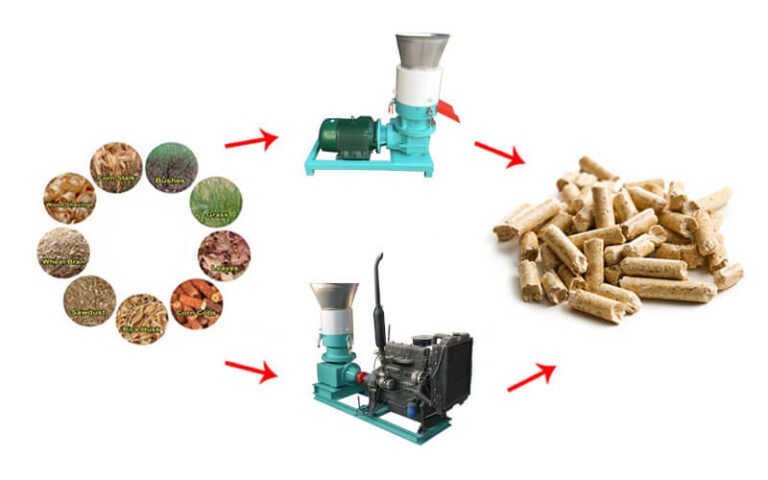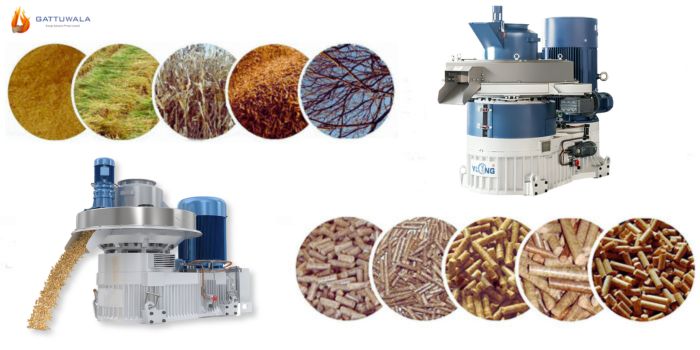
Introduction
Pellets are a versatile and efficient fuel source used in various industries, from heating to animal feed production. Their popularity has surged due to their sustainability, energy efficiency, and ease of handling. But what exactly are pellets made out of? This article explores the raw materials for pellets making, the manufacturing process, and the benefits of different types of pellets.
Raw Materials for Pellets Making
Pellets can be made from a variety of raw materials, primarily classified into biomass pellets, wood pellets, and feed pellets. The quality and type of pellets largely depend on the raw materials used.
1. Wood Pellets
o Made from compressed sawdust, wood chips, and forestry residues.
o Common woods used include pine, oak, maple, and fir.
o Ideal for heating and energy generation due to high calorific value.
2. Biomass Pellets
o Produced from agricultural waste like corn stalks, wheat straw, rice husks, and peanut shells.
o Considered an eco-friendly fuel option with lower emissions compared to fossil fuels.
3. Feed Pellets
o Composed of grains, soybean meal, and other nutritional additives.
o Used in livestock and poultry farming for efficient feeding and better digestion.
How Are Pellets Made?
The pellet-making process involves several steps to ensure uniformity, efficiency, and durability.
1. Raw Material Collection
o Materials such as sawdust, agricultural residues, and grains are gathered and sorted.
2. Drying
o The moisture content of raw materials must be reduced to about 10-15% to ensure proper pellet formation.
3. Grinding and Milling
o The materials are ground into fine particles to improve binding and compaction.
4. Pelletizing
o The fine particles are compressed under high pressure using a pellet machine.
o During compression, lignin (a natural binder in wood) softens and binds the particles together.
5. Cooling and Packaging
o Freshly made pellets are cooled to harden and prevent breakage.
o Finally, they are packaged and stored for distribution.
The Role of Oxidation and Hydrolysis in Pellet Quality
Two important chemical reactions influence pellet quality:
• Oxidation: This process occurs when pellets are exposed to oxygen, affecting their shelf life and combustion efficiency. Proper storage minimizes oxidation.
• Hydrolysis: Involves moisture absorption, which can weaken pellets and lead to decomposition. Keeping pellets in a dry environment prevents hydrolysis-related degradation.
Advantages of Using Pellets
Pellets offer numerous benefits across different applications:
• Renewable Energy Source: Biomass and wood pellets help reduce reliance on fossil fuels.
• High Efficiency: Pellets have a high calorific value, making them an efficient fuel option.
• Reduced Carbon Footprint: They produce lower emissions compared to coal and natural gas.
• Cost-Effective: Pellets are often more affordable than traditional fuels.
• Convenient Storage and Handling: Their uniform shape makes them easy to transport and store.
Top Pellet Machine Manufacturers in India
India has several reputed manufacturers supplying high-quality pellet machines:
1. Gattuwala Energy Solutions
o Specializes in biomass pellet machinery and offers a range of industrial pellet-making machines.
2. Yulong Pellet Machine
o A leading global brand known for advanced pellet technology.
3. Rajkumar Agro Engineers
o Manufactures small and large-scale pellet machines suitable for different industries.
Conclusion
Understanding what pellets are made out of helps in selecting the right type for specific needs. Whether for heating, energy production, or animal feed, pellets provide a sustainable and efficient solution. With high-quality raw materials, advanced manufacturing techniques, and trusted suppliers like Gattuwala Energy Solutions, the pellet industry continues to grow as a key player in renewable energy and industrial applications.




